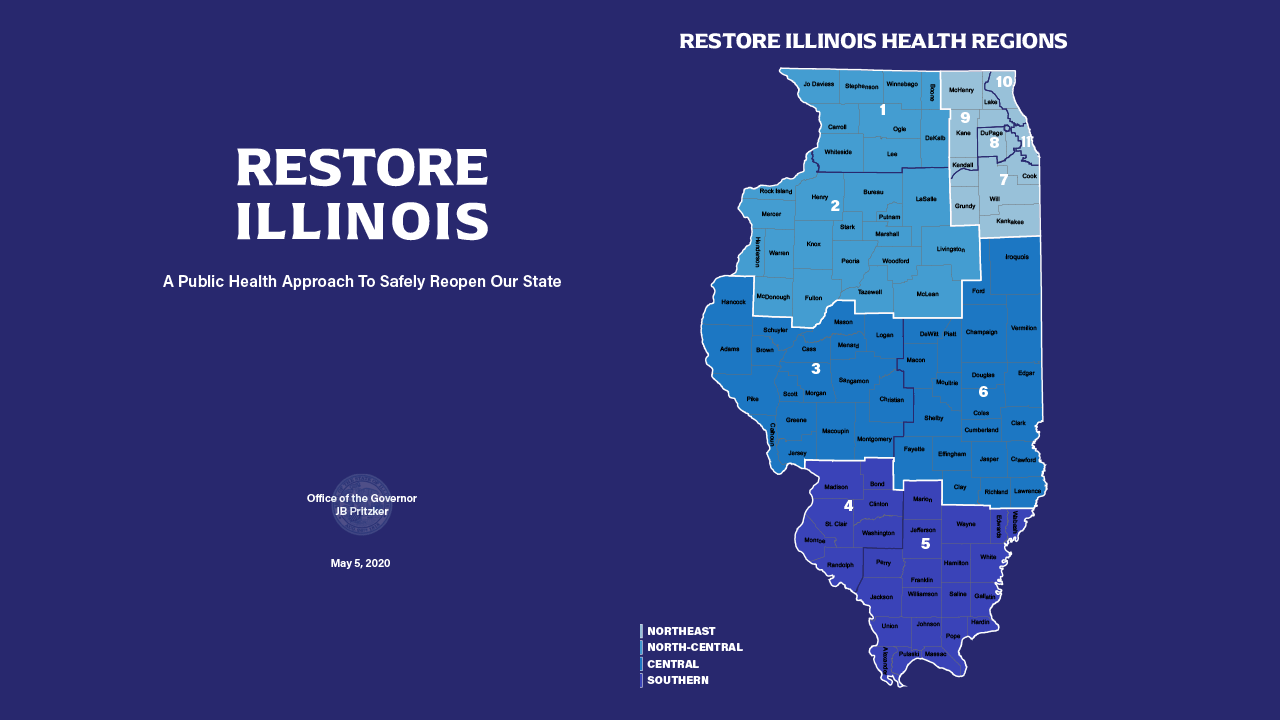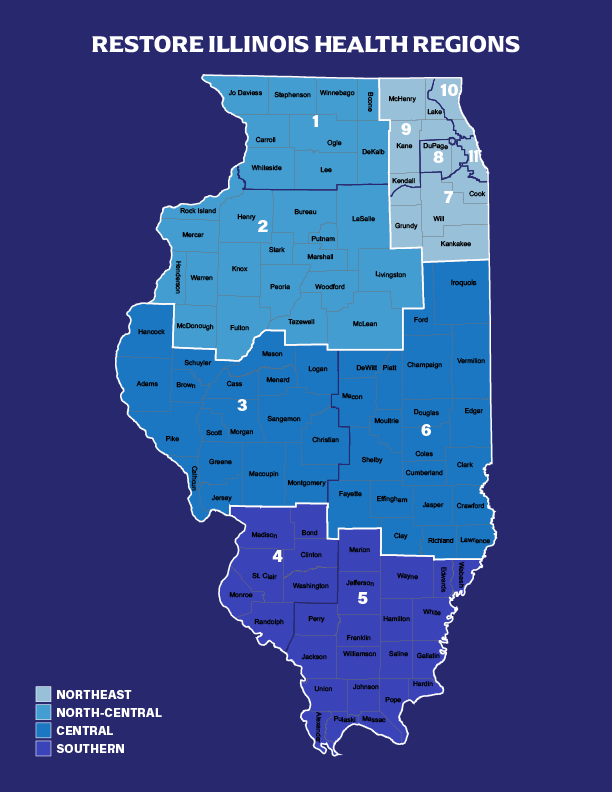Governor Announces Plan to (Eventually) Re-Open Illinois
Published on May 5 2020 4:39 pm
Last Updated on May 5 2020 4:54 pm
Written by Greg Sapp

During his daily COVID-19 press briefing Tuesday, Illinois Governor J.B. Pritzker announced "Restore Illinois", his plan to reopen the state.
The reopening would be in five phases. Phase 1 was the Rapid Spread phase. As of May 1, the state is in Phase 2, or the Flattening phase.
The next phase, Phase 3, is called the Recovery phase. In that phase, manufacturing, offices, retail, barbershops and salons can reopen to the public with capacity and other limits and safety precautions Gatherings of 10 people or fewer are allowed. Face coverings and social distancing are still the norm.
Phase 4, the Revitalization phase, would allow gatherings of 50 or fewer, restaurants and bars would be open, travel resumes, child care and schools reopen under guidance from IDPH. Face coverings and social distancing are still the norm.
Phase 5, the Illinois Restored phase, is where the economy fully reopens with safety precautions continuing. Conventions, festivals and large events are permitted, and all businesses, schools and places of recreation can open with new safety guidance and procedures.
The plan establishes four health regions, each with the ability to move through the five phases of recovery.
Effingham County is in the Central health region. The region extends border-to-border, east to west, and extends north past Champaign and then bordering Bloomington and Peoria. The southern border is basically along I-70, then drops south and along US Route 50 east to Indiana.
Each region would be able to progress through the five phases above on their own so, conceivably, the regions that meet the benchmarks could be out from under the various state restrictions sooner than the rest of the state.
Here's the map:

The five phases of reopening for each health region are as follows:
Phase 1 – Rapid Spread: The rate of infection among those tested and the number of patients admitted to the hospital is high or rapidly increasing. Strict stay at home and social distancing guidelines are put in place and only essential businesses remain open. Every region has experienced this phase once already and could return to it if mitigation efforts are unsuccessful.
Phase 2 – Flattening: The rate of infection among those tested and the number of patients admitted to the hospital beds and ICU beds increases at an ever slower rate, moving toward a flat and even a downward trajectory. Non-essential retail stores reopen for curb-side pickup and delivery. Illinoisans are directed to wear a face covering when outside the home, and can begin enjoying additional outdoor activities like golf, boating and fishing while practicing social distancing. To varying degrees, every region is experiencing flattening as of early May.
Phase 3 – Recovery: The rate of infection among those tested, the number of patients admitted to the hospital, and the number of patients needing ICU beds is stable or declining. Manufacturing, offices, retail, barbershops and salons can reopen to the public with capacity and other limits and safety precautions. All gatherings limited to 10 or fewer people are allowed. Face coverings and social distancing are the norm.
Phase 4 – Revitalization: The rate of infection among those tested and the number of patients admitted to the hospital continues to decline. All gatherings of up to 50 people are allowed, restaurants and bars reopen, travel resumes, child care and schools reopen under guidance from the IDPH. Face coverings and social distancing are the norm.
Phase 5 – Illinois Restored: With a vaccine or highly effective treatment widely available or the elimination of any new cases over a sustained period, the economy fully reopens with safety precautions continuing. Conventions, festivals and large events are permitted, and all businesses, schools, and places of recreation can open with new safety guidance and procedures in place reflecting the lessons learned during the COVID-19 pandemic.













